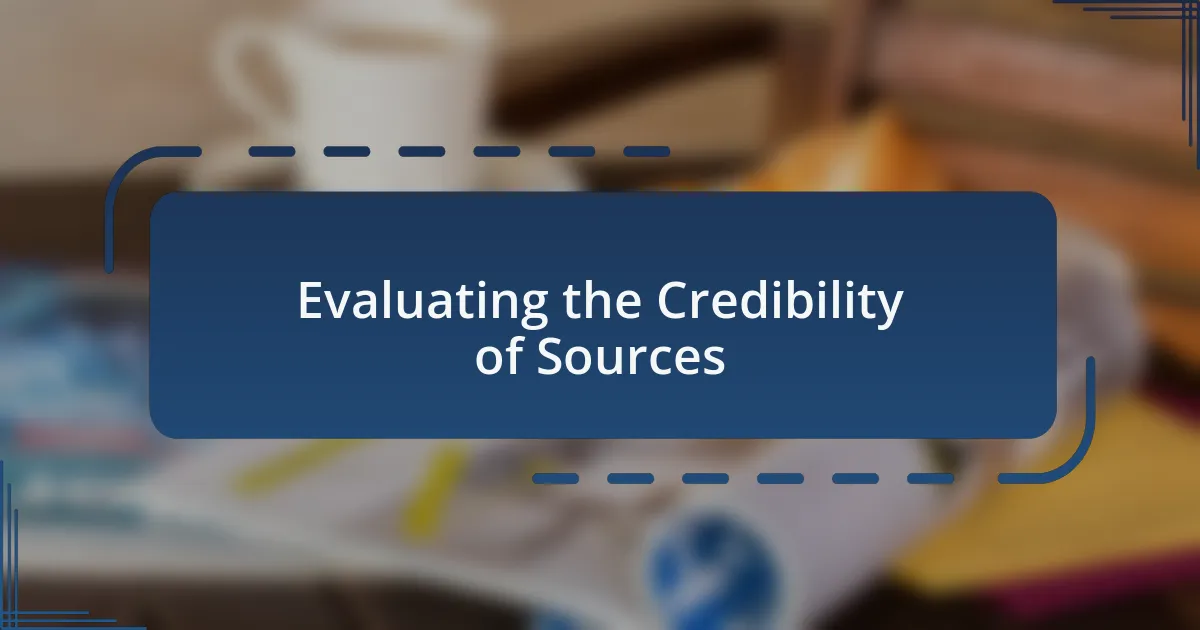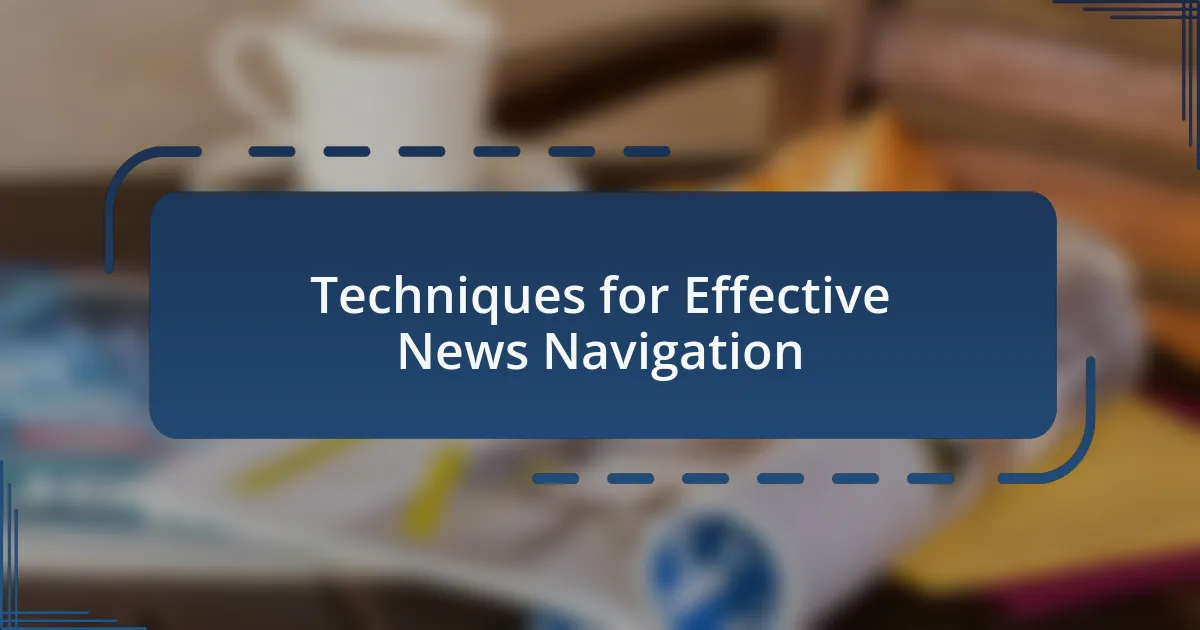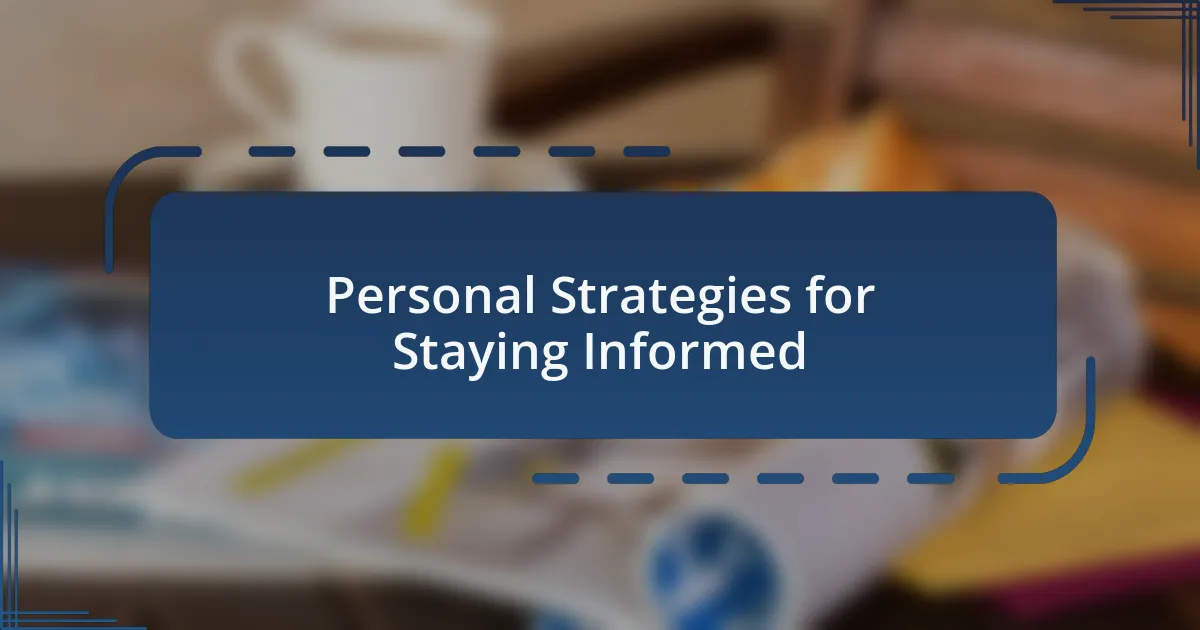Key takeaways:
- The UK news media landscape is diverse, featuring both traditional and digital platforms, which influences how news narratives are shaped by public interest.
- Social media has changed news consumption practices, making it essential to distinguish between credible information and misinformation.
- Effective news navigation involves using filters for reliable sources, engaging with diverse viewpoints, and setting dedicated times for news consumption.
- Curating trusted news sources and participating in comment discussions can enhance understanding and provide insight into public sentiment.

Understanding UK News Media
The landscape of UK news media is incredibly diverse, encompassing everything from traditional newspapers to digital platforms. I remember when I used to rely solely on print newspapers for my daily news fix. It’s fascinating how, with just a few taps on my phone, I can access a wealth of perspectives that represent not just London, but also regional voices across the UK.
I find it particularly striking that public interest often shapes the news narrative. Have you noticed how certain topics can dominate headlines for weeks? For example, during key political events, it feels as though every news outlet offers a slightly different interpretation. This variety can create a rich tapestry of information, yet it also raises the question: how do we discern what’s truly important amid all the noise?
Moreover, the rise of social media has transformed how we consume news, making it more immediate but also more fragmented. I often scroll through my feeds, noticing that trending stories come with a flurry of opinions and debates. It makes me wonder, in this fast-paced environment, are we truly informed, or are we just entertained? This complexity underscores the importance of approaching UK news media with a critical eye, mindful of the sources and the motivations behind them.

Common Platforms for News Consumption
When it comes to common platforms for news consumption, my go-to has become Twitter. The immediacy of breaking news on this platform is like nothing else, but I often find myself sifting through a sea of tweets to separate fact from opinion. Isn’t it wild how a story can change multiple times as updates roll out? That constant flow keeps me on my toes, and I’ve learned to double-check important news against other sources to validate the information before sharing it.
On the other hand, I’m also drawn to Instagram for its visual storytelling. I recall seeing a poignant photo series about climate change that really struck a chord with me. It made me realise that, while words can inform, images can evoke emotions and prompt action. Yet, I can’t help but ask: does scrolling through beautiful visuals sometimes distract us from the actual content? It’s a delicate balance, one that I strive to navigate carefully.
Lastly, traditional news apps and websites remain crucial. I appreciate how they often provide in-depth analysis and context. Just the other day, I accessed a lengthy feature article on the economic implications of Brexit, and I found myself completely immersed in the data and perspectives it offered. It makes me ponder: are we missing out on in-depth reporting when we primarily rely on our social feeds? I genuinely believe that diving deep into longer articles can enhance our understanding of important issues in ways that brief social media snippets simply cannot.

Evaluating the Credibility of Sources
When I come across news on social media, my first instinct is to check the source. A recent experience stood out for me when I saw a trending story about a celebrity’s controversial statement. It turned out that the source was a satirical site. This made me think: how easily can misinformation spread when we’re not vigilant? I now prioritize checking whether a site is reputable before diving into the content.
I often remind myself to follow established news organizations that have a history of journalistic integrity. For instance, I vividly remember reading an article from a reputable British newspaper about a local event, which provided not just facts but also context, helping me better understand the community’s perspective. It begs the question: isn’t the context just as important as the facts themselves? Understanding where the story fits into the bigger picture is crucial for navigating today’s news landscape.
Additionally, I consider the authorship of articles. If I see a name I recognize as a credible journalist, I feel more at ease sharing the news. I recall sharing an investigative piece authored by someone I followed for years and getting feedback that my friends trusted the information. It’s fascinating how the credibility of an individual can enhance the reliability of the news. It makes me wonder: are we unconsciously forming connections to journalists the same way we do with influencers?

Techniques for Effective News Navigation
When navigating news on social media, I find it essential to utilize filters and settings to customize what I see. For example, I once adjusted my news feed to prioritize content from verified sources and avoid sensational headlines. This simple tweak made a significant difference; I began encountering articles that not only informed but also encouraged critical thinking. Have you ever thought about how your social media settings shape your perceptions of current events?
Engaging with diverse viewpoints is another technique I highly endorse. Just the other day, I stumbled upon a heated discussion post from a friend with a different political stance. Initially, I felt discomfort, but reading through the comments offered insights I hadn’t considered before. It struck me: aren’t our biases often challenged when we expose ourselves to opposing views? Actively seeking varied perspectives can deepen our understanding of complex issues.
Lastly, I recommend setting aside specific times for news consumption rather than scrolling aimlessly throughout the day. I started dedicating 30 minutes each morning to catch up on headlines, which transformed my overall engagement with news. I’m curious—how often do we allow ourselves time to digest information versus merely skimming through it? Creating intentional moments for news navigation can enhance clarity and help differentiate between noise and meaningful content.

Personal Strategies for Staying Informed
One personal strategy I’ve found invaluable is curating a list of trusted news accounts to follow. I remember a time when my feed was flooded with misinformation, and it left me feeling overwhelmed and confused. By selectively following reputable journalists and established news organizations, I’ve created a space where I can access reliable information that resonates with my interests and values. Have you ever contemplated how the sources you choose influence not just your knowledge but also your emotional response to the news?
Another approach I adopt is leveraging the comment sections and discussions that follow articles. I distinctly recall a fiery exchange that erupted under a breaking news story about economic policies. It was fascinating to observe how people’s experiences shaped their opinions, and it made me realize that there’s often more to a headline than meets the eye. Engaging with these conversations not only broadens my perspective but also helps me gauge public sentiment—which can be just as important as the facts themselves.
Lastly, I often jot down a few key takeaways or questions after consuming news. This practice started when I felt overwhelmed by the sheer volume of information bombarding me. By summarizing articles in my own words, I create a mental repository that helps me retain and reflect on what I’ve learned. Have you tried this technique? It’s often surprising how writing things down can illuminate connections and insights I might otherwise overlook.